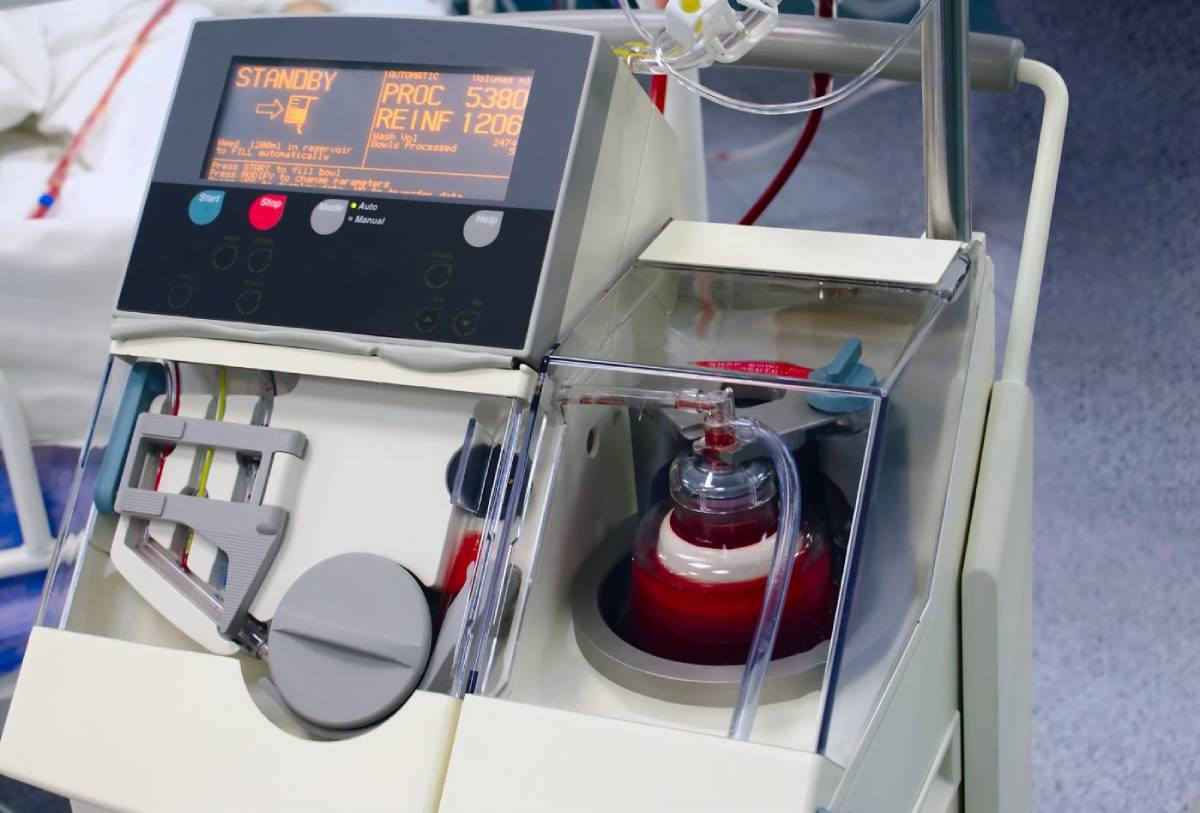
Blood or cell salvage, also referred to as autologous blood transfusion or intraoperative blood salvage, is a medical procedure that consists in the harvesting red cells shed during surgery, processing and preparing them for safe return to the patient’s own circulation as an autologous red cell transfusion during or immediately after surgery 1. The first publication of cell salvage in humans appeared in 1818, but it was then still associated with a high mortality rate. It was not until the 1960s that intraoperative blood salvage in its current recognisable form was first introduced and has become increasingly critical as a strategy for blood management during and after surgery. This technique, born out of the necessity to reduce reliance on donor blood and its associated risks, is now important to enhancing patient outcomes, minimizing transfusion-related complications, and optimizing resource utilization during surgical interventions.
Blood salvage involves the collection, filtration, and reinfusion of a patient’s own blood that is shed during surgery. This process begins with the meticulous collection of blood from the surgical field using a specialized device known as a cell saver. The collected blood is then processed through a series of filters to remove debris, contaminants, and unwanted substances, leaving behind a purified autologous blood product ready for reinfusion. The salvaged blood may remain outside the body during much of the surgery and be re-infused near the end of the surgical procedure. Hospitals with formal bloodless medicine programs have a significant amount of experience with these techniques 2.
There are no good data to define the estimated blood loss at which blood salvage is appropriate. An estimated blood loss of approximately 1000 mL should justify a blood salvage procedure. However, it may be reasonable for some patients with estimated blood loss volumes ranging from 500 to 750 mL as well. However, different thresholds may apply to different patients, as the exact threshold is highly individual 3.
The versatility of blood salvage extends across a wide array of surgical specialties. This technique is implemented in the context various elective and emergency major surgical procedures, including cardiac, major vascular, major orthopedic, transplantation, trauma, and certain urologic, neurosurgical, gynecologic, and plastic surgical procedures 3. In cardiac surgery in particular, the ability to salvage and reinfuse the patient’s own blood aids in maintaining hemodynamic stability 4.
One of the primary advantages of blood salvage is its ability to minimize the risks linked to allogeneic blood transfusions. Allogeneic transfusions, while frequently necessary, carry risks such as infections, transfusion reactions, and immunological responses. By using a patient’s own blood, blood salvage significantly mitigates these risks, enabling a safer and more personalized approach to patient care 2.
As the demand for donor blood decreases, so does the financial burden linked to the processes of blood procurement, testing, and storage. By recycling and reinfusing a patient’s own blood, the need for external blood donors is reduced, thereby minimizing the demand for donor blood products. Blood salvage thus allows for resource optimization and cost-effectiveness in surgery with benefits for patients and healthcare institutions. However, additional research and long-term data on the cost savings of blood salvage during surgery is warranted 5.
While blood salvage has revolutionized surgical practices, challenges remain. Not all surgical scenarios are conducive to effective blood salvage, and careful patient selection and surgeon expertise are critical. Ongoing research is focused on addressing these limitations and exploring innovations, such as improvements in cell saver technology and the development of novel blood substitutes.
References
- Carroll, C. & Young, F. Intraoperative cell salvage. BJA Education (2021). doi:10.1016/j.bjae.2020.11.007
- Intraoperative Blood Salvage | Allegheny Health Network. Available at: https://www.ahn.org/services/medicine/bloodless-medicine/faq/intraoperative-blood-salvage. (Accessed: 30th January 2024)
- Surgical blood conservation: Intraoperative blood salvage – UpToDate. Available at: https://www.uptodate.com/contents/surgical-blood-conservation-intraoperative-blood-salvage. (Accessed: 30th January 2024)
- Klein, A. et al. A survey of patient blood management for patients undergoing cardiac surgery in nine European countries. J. Clin. Anesth. (2021). doi:10.1016/j.jclinane.2021.110311
- McLoughlin, C. et al. Cost-effectiveness of cell salvage and donor blood transfusion during caesarean section: Results from a randomised controlled trial. BMJ Open (2019). doi:10.1136/bmjopen-2018-022352

